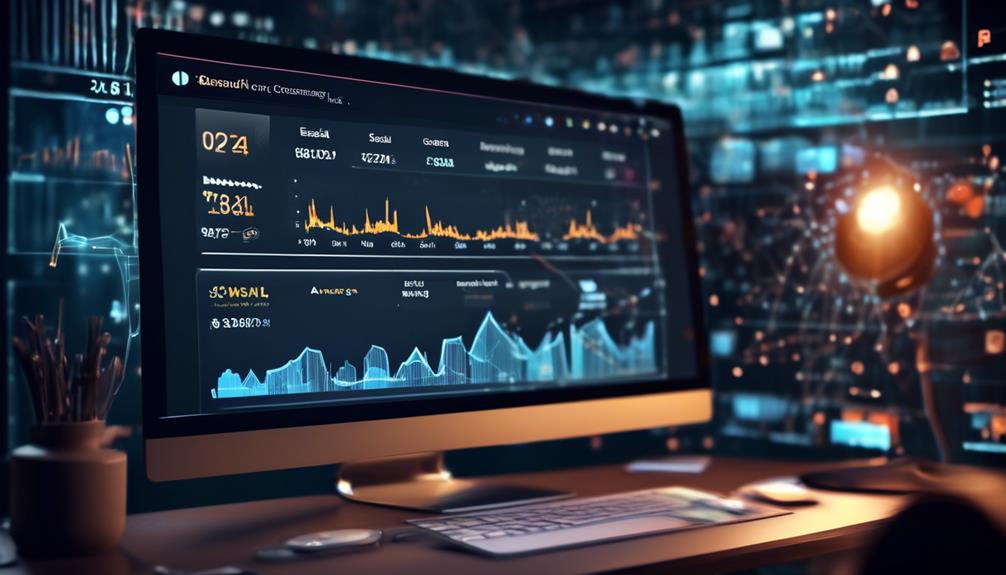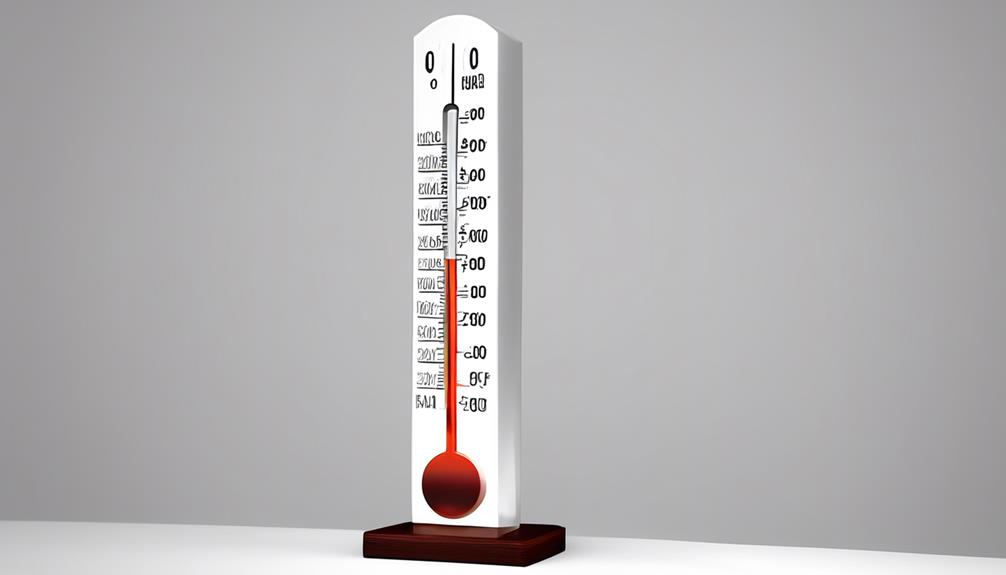During the email warming process, it is akin to slowly raising the temperature of water in a pot, ensuring it does not boil over too quickly.
We all know the importance of email warm-up, especially for new accounts, but the question remains – how do we do it effectively?
As professionals in the field, we understand the intricacies involved and the impact it can have on email deliverability and engagement.
So, let's explore the best practices and strategies for warming up email accounts, and discover the tools and methods that can help us navigate this crucial process seamlessly.
Key Takeaways
- Gradually increasing the volume of emails sent is crucial for establishing a positive reputation for a new email account.
- Warm-up emails enhance email deliverability and help build relationships in cold email campaigns.
- Choosing the right Email Service Provider (ESP) and following best practices are important for effective warm-up.
- Automated email warm-up tools can save time and effort while optimizing email campaign performance.
Understanding Email Warm-Up
We'll begin by explaining the importance of email warm-up in establishing a positive reputation for a new email account. When sending emails from a new account, it's essential to warm up the account gradually. This process involves starting with a small volume of emails and gradually increasing the sending volume over time. By doing so, we can build a positive reputation with email service providers, which is crucial for ensuring that our emails land in the recipient's inbox rather than being marked as spam. Building a good sender reputation is vital for the long-term success of our email campaigns.
There are two primary methods for warming up an email account: manual warm-up and automated warm-up. Manual warm-up involves gradually increasing the volume of emails sent, while automated warm-up utilizes tools like the Email Warm-Up tool to automate the process. Regardless of the method chosen, the goal is to establish a positive sender reputation for the new account.
To warm up your email accounts effectively, it's important to choose the right Email Service Provider (ESP) and follow best practices such as writing human-sounding emails and limiting the number of links in the initial emails. Additionally, utilizing tools like Trulyinbox, Warmy.io, and Mailwarm can streamline the warm-up process, offering features like automated set-up, customized warm-up templates, and integration with popular ESPs. By taking these steps, we can ensure that our sender reputation remains strong and that our emails consistently reach their intended recipients.
Importance of Email Warm-Up

Establishing a positive sender reputation through email warm-up is crucial for ensuring that our emails are delivered successfully and avoid being marked as spam. When warming up your email, especially with a new domain and email, it's essential to recognize the importance of email warm-up.
Sending cold emails without warming up your new email could lead to poor deliverability and low engagement. The importance of warm-up emails can't be overstated when it comes to cold email outreach. By warming up your email, you enhance email deliverability, ensuring that your emails reach the intended recipients' inboxes. This is vital for building relationships and trust in a cold email campaign.
Furthermore, well-warmed emails have higher open rates and are less likely to be caught in spam filters. Overall, the significance of warm-up emails lies in their ability to improve email deliverability and enhance sender reputation, leading to more successful email campaigns.
Manual Email Warm-Up Methods
To establish credibility for your new email account, it's essential to authenticate it through SPF, DKIM, DMARC, and a custom domain.
When engaging in manual email warm-up methods, it's crucial to take a hands-on approach as a sender. Begin by sending individual emails to friends and colleagues, creating genuine engagement. It's also important to maintain conversation threads and reply to emails from the new account to simulate regular mailbox activity.
Additionally, subscribing to newsletters and confirming the subscriptions can increase email inflow and engagement. To gradually warm up the domain, it's advised to maintain a time gap between consecutive emails to avoid affecting domain reputation and then gradually increase email volume.
Monitoring SPF and DKIM records, as well as the email sending quota, is essential when manually warming up an email account. It's also important to be mindful of the IP address and email service providers when conducting manual warm-up activities.
These manual methods are especially valuable when preparing for an outreach campaign, ensuring that the email account is fully warmed up and ready for successful communication.
Automated Email Warm-Up Tools

Let's talk about the benefits of using Automated Email Warm-Up Tools. These tools can help us implement effective warm-up strategies while saving time and effort.
We'll also explore how to choose the right tool for our specific needs.
Email Warm-Up Benefits
Automated email warm-up tools significantly enhance the reputation and performance of new email accounts by simulating real user behavior and gradually increasing email volume. Using these tools, we can make a brand new domain and new email address look credible and trustworthy from the start.
The benefits of email warm-up include establishing a positive domain reputation, increasing the sending limit, and improving deliverability, open rates, and engagement. By gradually increasing the number of emails sent, these tools ensure that our brand new domain and email address are recognized as legitimate and not flagged as spam.
This process is crucial for preventing spam reports, achieving higher delivery rates, and optimizing the performance of our email campaigns. Automated email warm-up tools save time and effort while effectively building a strong foundation for our email marketing efforts.
Effective Warm-Up Strategies
Enhancing our email sender reputation and achieving consistent engagement can be effectively accomplished through the use of automated warm-up tools.
When warming up email, effective strategies using these tools include:
- Gradual Volume Increase: Automated tools gradually increase email sending volume, ensuring a positive sender reputation.
- Simulating User Behavior: These tools simulate real user behavior, minimizing the risk of triggering spam filters and enhancing open rates.
- Time-Saving and Efficient: Using automated warm-up processes saves time and effort, leading to higher delivery rates and a good sender reputation.
Automated warm-up is crucial for new email accounts, sending cold emails, mass personalized emails, and successful cold email marketing.
Tools such as Trulyinbox, Warmy.io, and Mailwarm offer advanced features, ensuring efficient warm-up processes for improved email deliverability and reputation.
Choosing the Right Tool
As we focus on selecting the appropriate tool for automated email warm-up, it's essential to consider the pivotal role these tools play in establishing a positive sender reputation and improving email deliverability. When choosing the right automated email warm-up tool, factors such as email volume, sending cold emails, SPF Authentication, Domain Keys Identified Mail (DKIM), unlimited email, G Suite integration, and the ability to manage various email campaigns should be taken into account. Below is a comparison of advanced features offered by popular automated warm-up tools:
| Features | Trulyinbox | Warmy.io | Mailwarm |
|---|---|---|---|
| Personalized Emails | ✓ | ✓ | ✓ |
| Automated Set-up | ✓ | ✓ | ✓ |
| Daily Insights | ✓ | ✓ | ✓ |
These features can significantly impact the effectiveness of warming up email and navigating through spam filters.
Determining When to Stop Warm-Up

Once our monitoring tools consistently show good sender reputation and deliverability metrics, we can confidently conclude that the warm-up process for the email account is complete.
To determine when to stop warming up the email, we should consider the following:
- Monitor Engagement Metrics: Track open rates, click-through rates, and bounce rates to gauge recipient engagement. Higher engagement indicates that the warm-up process has been successful in building a positive sender reputation.
- Check Spam Complaint Rate: Ensure that the spam complaint rate remains below 0.1% to avoid negative impacts on sender reputation. A low spam complaint rate indicates that the emails are being well-received and not ending up in the spam folder.
- Assess Deliverability: Stop warming up the email account when the bounce rate remains low and deliverability is consistently good. Higher delivery rates and minimal bounce rates are indicative of a successfully warmed-up email account.
Post-Warm-Up Strategies

As we transition to discussing post-warm-up strategies, it's crucial to consider follow-up emails and additional resources that can help maintain the success achieved during the warm-up process.
By monitoring email engagement metrics and regularly optimizing content, we can ensure that our emails continue to be well-received.
It's important to utilize email warm-up tools and adjust sending volume as needed to adapt to ongoing performance metrics and maintain a positive sender reputation.
Follow-Up Emails
After completing the warm-up process for our email account, our next step involves implementing effective follow-up strategies to maintain engagement and credibility.
- Time Gap Between Two Emails: Ensure there's a reasonable time gap between follow-up emails to avoid overwhelming recipients or being flagged as spam.
- Personalization and Relevance: Customize follow-up emails based on previous interactions to keep the conversation relevant and engaging.
- Digital Signature and Sender Policy Framework: Utilize digital signatures and adhere to SPF to enhance email deliverability and credibility.
Implementing these strategies will help in maintaining the positive reputation of the warmed-up email account and ensure that follow-up emails are well-received by recipients.
Additional Resources
Upon completing the warm-up process for our email account, our team can now explore additional resources to enhance post-warm-up strategies. It's crucial to consider the sender policy framework (SPF) and domain keys identified mail (DKIM) to improve email deliverability and establish a positive sender reputation. Additionally, utilizing automated tools, such as Trulyinbox, Warmy.io, and Mailwarm, can help gradually increase sending volume while ensuring consistent engagement. Subscribing to newsletters can also contribute to better email deliverability. Furthermore, manual methods like reaching out to influencers, engaging in conversations, and leveraging out-of-office replies can aid in the warm-up process. It's essential to personalize emails and be mindful of daily sending limits. The table below provides a visual representation of ideas for additional resources.
| Additional Resources | Description |
|---|---|
| Automated Tools | Gradually increase sending volume |
| SPF and DKIM | Improve email deliverability |
| Newsletters | Contribute to better sender reputation |
| Manual Methods | Engage in personalized outreach |
| Sending Limits | Be aware of daily sending caps |
Factors Affecting Email Warm-Up

One crucial factor affecting email warm-up is the reputation of the sender, which plays a significant role in establishing a positive image for a new email account. This is important because a good sender reputation increases the chances of landing in prospects' inboxes and getting a reply back.
To achieve this, we need to warm up the email account before sending a large number of emails. Here are the key factors that affect email warm-up:
- Domain: New domains start with a neutral reputation and need time to earn a good reputation. It's important to make sure that the domain age is considered when warming up an email account.
- Time: It takes time to build a positive sender reputation. Sending a continuous email conversation rather than a sudden large number of emails can improve the reputation of the sender.
- Make sure to send emails on behalf: Sending emails on behalf of the new email account rather than directly from it can positively impact the warm-up process.
Best Email Warm-Up Tools

When it comes to establishing a positive sender reputation and effectively warming up new email accounts, utilizing the best email warm-up tools is essential. These tools play a crucial role in gradually increasing the volume of emails sent, especially when initiating a cold email campaign. They help in implementing measures such as Domain Keys Identified Mail (DKIM) and Sender Policy Framework (SPF) to improve deliverability and reputation. Moreover, they enable the sending of highly personalized emails, including an unsubscribe link, to engage recipients and avoid being marked as spam.
Some of the best email warm-up tools available in the market include:
- Trulyinbox: It offers advanced warm-up reports and the ability to adjust sending volume with a single click.
- Warmy.io: It provides the flexibility of choosing warm-up templates and multi-language support.
- Mailwarm: It allows for unique reply and send schedules, with seamless integration with popular Email Service Providers (ESPs).
- SalesBlink: It offers automated email outreach and integrates with Customer Relationship Management (CRM) systems, allowing for personalized warm-up strategies and detailed analytics.
- Warmup Inbox: It stands out with its advanced tracking and personalized schedules, aiming to improve sender reputation and avoid spam filters.
These tools are instrumental in optimizing email activities and ensuring the successful warm-up of custom domains.
Frequently Asked Questions
How Do You Write a Warm up Email?
We write warm-up emails by engaging the recipient with personalized content, addressing their needs, and offering value.
We aim to establish a connection and build trust through genuine communication.
We maintain a friendly tone, use clear and concise language, and provide a compelling call to action.
How Do I Manually Warm up My Email Domain?
We meticulously manage our email warm-up process by methodically monitoring and maintaining a consistent sender reputation.
Meticulous monitoring involves gradually increasing email volumes and engaging in genuine interactions to establish a positive reputation.
We meticulously authenticate our account through SPF, DKIM, DMARC, and a custom domain to maximize deliverability.
Meticulous attention to best practices, such as personalized content and limited links, ensures a successful warm-up process.
What Does It Mean to Warm up Your Email?
Warming up your email means gradually building a positive sender reputation. It involves gradually increasing email volume to avoid being labeled as spam and improve delivery rates.
By starting with manual methods like sending individual emails and engaging in conversations, one can establish credibility. Using automated tools can streamline this process, saving time and effort.
Following best practices like genuine writing and limited links is essential for successful email warm-up.
How Long Should I Warm up My Email?
We should warm up our email for 2-4 weeks.
It's essential to start with a low volume and gradually increase it to build a good reputation.
This process helps to establish trust with email service providers and improves deliverability.
Can You Provide an Example of an Effective Email Warm-up Template?
Sure, here’s a warm-up email sample template you can use: Subject: Quick Question Hi [Name], I hope this email finds you well. I came across your profile and was impressed by [specific detail]. I would love to connect and learn more about your experience in [industry]. Looking forward to your response.
Conclusion
In conclusion, email warm-up is essential for ensuring our emails reach the right inboxes and don’t end up in the spam folder. Email warming is the process of gradually increasing the volume of emails sent from a new IP address in order to establish a positive sending reputation. By properly implementing email warming, we can avoid being flagged as spam and improve the deliverability of our messages. This is why it is important to prioritize email warming as a key component of our email marketing strategy.
It's like breaking the ice at a party – we need to gradually build trust and credibility with our email account to make sure our messages are well-received.
By following the right warm-up methods and tools, we can improve our email deliverability and engagement, setting the stage for successful email campaigns.










